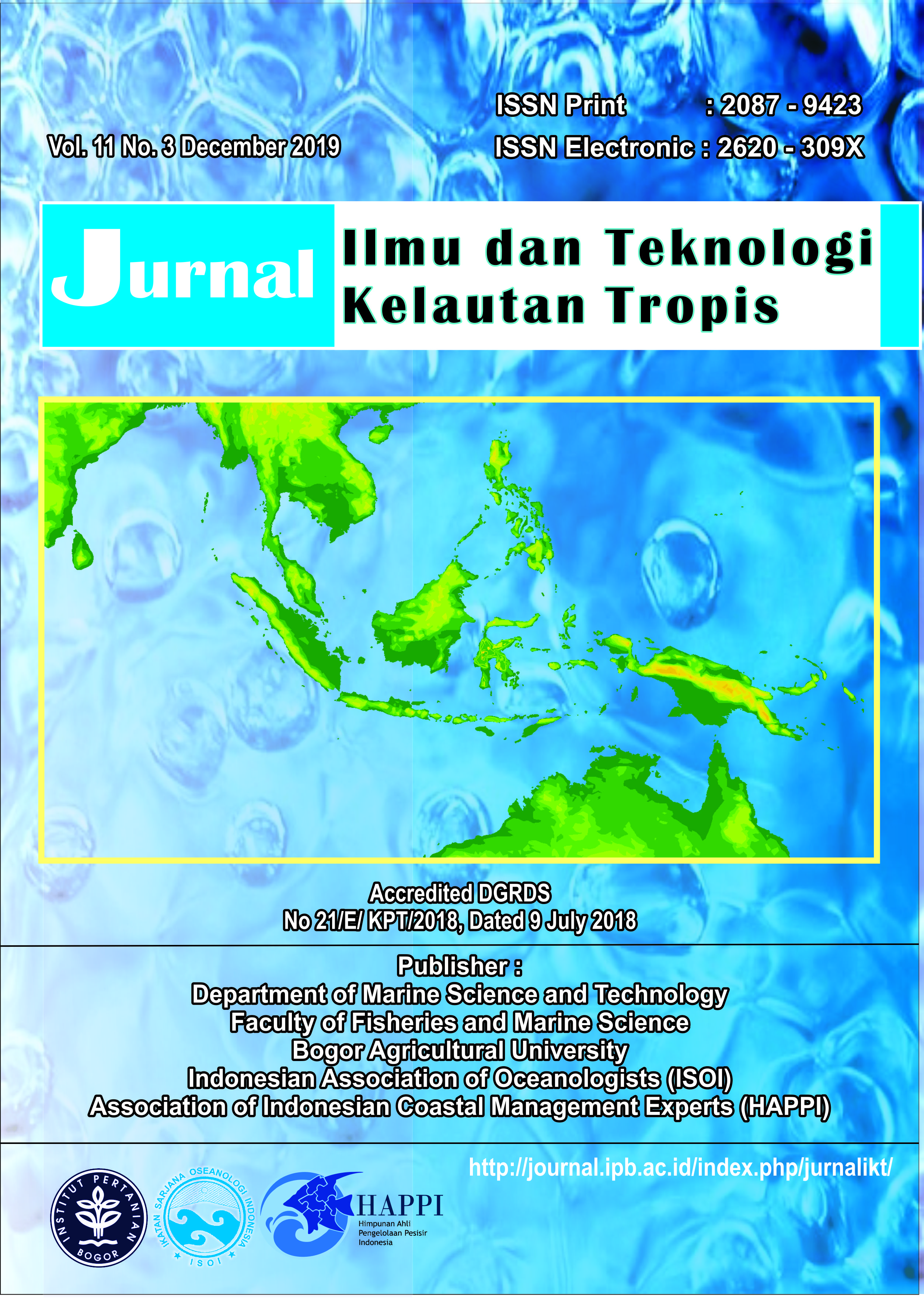EFFECT OF 17β-ESTRADIOL HORMONE ADMINISTRATION ON THE DOG CONCH’S Laevistrombus turturella GONAD DEVELOPMENT
Abstract
Dog conch Laevistrombus turturella is captured intensively, therefore, their population is decline. The dog conch culture is needed to maintain their population. The technology towards conch reproduction is still not developed yet in Indonesia. The 17β-estradiol hormone in conch and some mollusks has been stated by some researcher yet its main role in conch reproduction process has not widely known. The study about the addition of 17β-estradiol hormone in accelerating gonad development has never been reported. The aim of this study was to evaluate the impact of the addition of 17β-estradiol against dog conch’s gonad development. This study used three treatments for three groups of dog conch those were without injection (P1), injection by 30 µL of corn oil mixed with absolute ethanol (P2), and 30 µL of 17β-estradiol stock solution (P3). After injection, the dog conch was reared in pens culture in their natural habitat for 30 days. This study showed that the injection of a 17β-estradiol solution (P3) stimulated the dog conch’s gonad development as evidenced by greater oocyte mean diameter than another treatment. The mean of gonadal weight and GSI on P3 treatment was also higher than treatments P1 and P2. SDS-PAGE analysis showed that dog conch’s hemolymph has several kinds of proteins with varying molecular weights. Proteins with a molecular weight of 54-55 kDa are predicted as dog conch’s vitellogenin.
Authors
This work is licensed under a Creative Commons Attribution 4.0 International License.
Jurnal Ilmu dan Teknologi Kelautan Tropis i is an open-access journal, meaning that all content is freely available without charge to the user or their institution. Users are allowed to read, download, copy, distribute, print, search, or link to the full texts of the articles in this journal without needing to request prior permission from the publisher or the author.
All articles published by Jurnal Ilmu dan Teknologi Kelautan Tropis are licensed under the Creative Commons Attribution 4.0 International License. This allows for unrestricted use, distribution, and reproduction in any medium, provided proper credit is given to the original authors.
Authors submitting manuscripts should understand and agree that the copyright of published manuscripts is retained by the authors. Copyright encompasses the exclusive rights of authors to reproduce, distribute, and sell any part of the journal articles in all forms and media. Reproduction of any part of this journal, its storage in databases, and its transmission by any form or media is allowed without written permission from Jurnal Ilmu dan Teknologi Kelautan Tropis.


